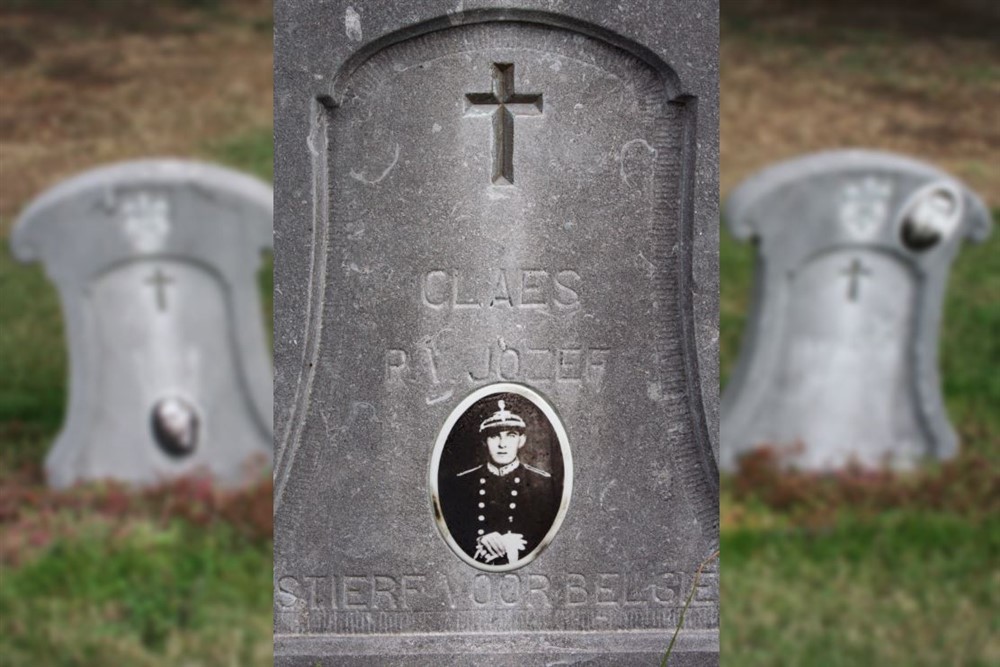Belgian War Graves Aarschot
Aarschot-Ourodenberg Communal Cemetery contains a plot with 71 Belgian war graves from World War I.
The cemetery of Aarschot contains a plot of honour with the graves of civilians who were executed by the Germans on 18 and 19 August 1914. Other graves of executed civilians are scattered throughout the cemetery.
A total of 173 inhabitants of Aarschot have been killed by German troops in August 1914. Mayor Tielemans, his son Louis and his brother Emile, were condemned to death by the Germans and executed on 19 August 1914.
The cemetery of Aarschot contains a Belgian burial of the Second World War. It’s the grave of DE KEYSER Emiel, fallen at Zevenkerken on 27 May 1940. There is also the grave of VAN EVEN Jozef, civilian victim of the Second World War.
Apart of the Belgian war cemetery of the First World War is the grave of MOUSIN Alexis Emile, fallen at Aarschot on 19 August 1914.
Civilian casualties of the Second World War
In front of the rows of civilian casualties from the First World War, there are three separate headstones. Two gravestones belong to the resistance fighters Jozef "Jos" Claes and Léon Claes. Jozef Claes was leader of the resistance movement Fidelio for sector 075 (Aarschot). As Deputy Commissioner of Aarschot, he had the opportunity to obtain official papers. Léon Claes was a photographer. Together with other members of the resistance in Aarschot, they ensured that allied pilots who had been shot down were given shelter and were safely put on an escape line. 1943 is a black year for most resistance movements in our country. In that autumn many resistance fighters were arrested. Also Jos and Léon. Jos was executed in retaliation on October 13, 1943 in Brasschaat. After the war, on May 15, 1945, he was solemnly buried on Ourodenberg with great interest. Léon was arrested together with Jos. As a Nacht und Nebel prisoner, he was sent to concentration camps in Germany. On April 29, 1945, he was released from the Dachau camp. But greatly weakened - he only weighed 35 kg - he got typhoid fever and died in Germany on May 12, 1945. On January 7, 1962 he was also buried in Aarschot.
The third grave is by Isidoor Van Beeck. On his death card we read: "By force he was kidnapped to a strange land, far from his frightened parent and family; there he died as a sacrifice for the Fatherland. "Isidoor was forced to work in Berlin-Lichtenberg in 1943 as a young man of the "class of 1921" by the German government. He died on July 20, 1944. Only on January 16, 1956, twelve years after his death, he was buried in Aarschot.
Fifty-five years after the war, on July 17, 2000, the German government decided to set up a fund under the Wiedergutmachung to compensate former forced laborers.
Do you have more information about this location? Inform us!
Source
- Text: Luc Van Waeyenberge & Jan Rymenams
- Photos: Luc van Waeyenberge (1, 3, 4, 5), Jan Rymenams (2)
Nearby
Museum
- Stedelijk Museum, Room "War and destruction" Aarschot - Aarschot
- 1.9 km
- Allied Forces Museum Herselt - Herselt
- 4.4 km
- House of the Franco-Belgian Resistance - Tielt-Winge
- 11.2 km
Point of interest
- Peace Carillon Aarschot - Aarschot
- 2.3 km
- Glass Window Church Of Our Lady Aarschot - Aarschot
- 2.3 km
- Grote Markt Aarschot - Aarschot
- 2.4 km
Monument
- War Memorial Aarschot Cemetery - Aarschot
- 0.0 km
- Memorial 9th Line Regiment Aarschot - Aarschot
- 0.8 km
- OSB House Uytterhoeven Aarschot - Aarschot
- 2.0 km
Cemetery
- Belgian Graves Veterans Aarschot - Aarschot
- 0.1 km
- Belgian War Grave Langdorp - Langdorp (Aarschot)
- 2.6 km
- Commonwealth War Graves Langdorp - Langdorp (Aarschot)
- 2.6 km





